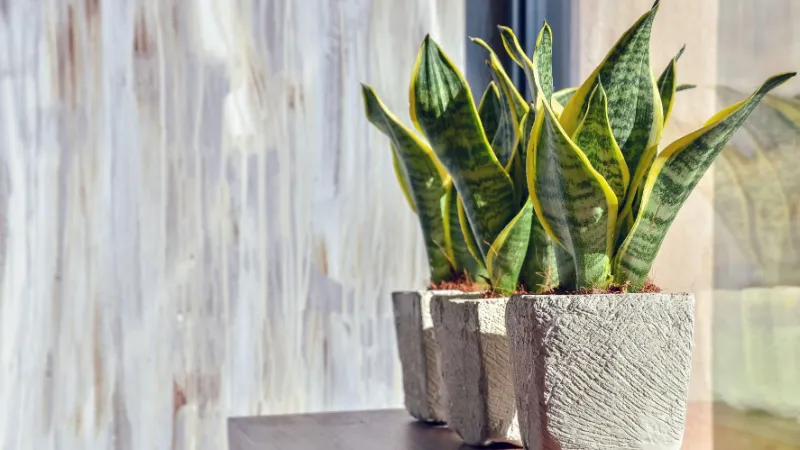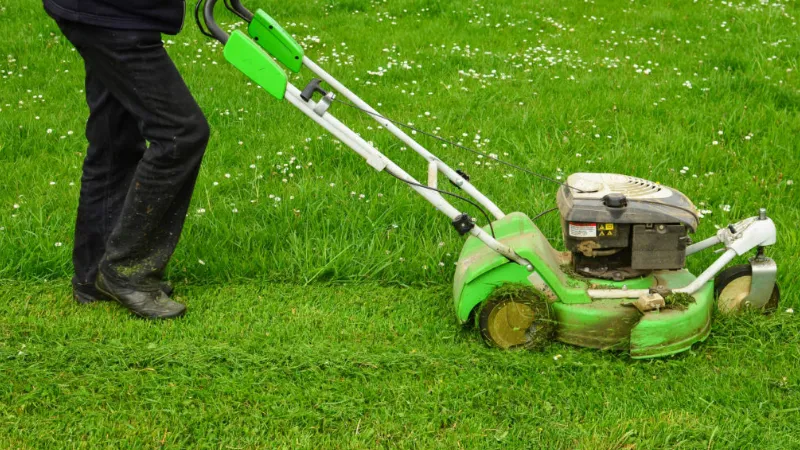You can use this guide to determine when your snake plant is being overwatered as well as how to stop waterlogging and save the plant from death. Here are the quick steps on how to save an overwatered snake plant:
Move your snake plant to a sunny spot, remove your snake plant from the old soil, look for signs of root rot, repot your snake plant, and know how much root rot is too much.
For more information, continue reading.
Signs of An Overwatered Snake Plant
It’s bad to overwater snake plants. A plant that receives too much water will have many problems growing and being properly nourished. For healthy development, you have to ensure to take proper care of the snake plant. We have listed below some indicators to identify if your snake plant is facing any overwatering issues:
- Leaves dropping in snake plants
- Brown leaf tips in snake plants
- Root rots in snake plants
- Leaves turning yellow in snake plants
- Squishy leaves in snake plants
- Mold in snake plants
Leaves dropping in snake plants
The drooping of the leaves on your overwatered snake plant is one of the most noticeable symptoms. The leaves will begin to get soft and even mushy as they take in too much water and will start to lose their structure, also resulting in them bending over.
Despite this, there won’t be any signs of rot on the plant. Verify that there isn’t an excessive amount of moisture in the soil in the pot. Because then, it won’t absorb water properly and will be extremely soggy. Due to the soil’s deficiency in oxygen, ammonia builds up in the plant’s tissues. The result is that part of the branch dries out!
There are two ways you can tell when leaves are drooping. One, if the soil around the snake plant is wet, you’ve probably been overwatering it. Additionally, if the soil is dry, you can also take other factors like temperature, potting soil, stress, or even snake plant drowning into consideration for the reason why the leaves are drooping.
Maintaining the water level in the plant will ensure a regular flow of minerals in the snake plant avoiding any such situation. If not addressed quickly, drooping leaves can cause the plant to slowly deteriorate and eventually die. Consequently, it is necessary to check the water flow in the plant.
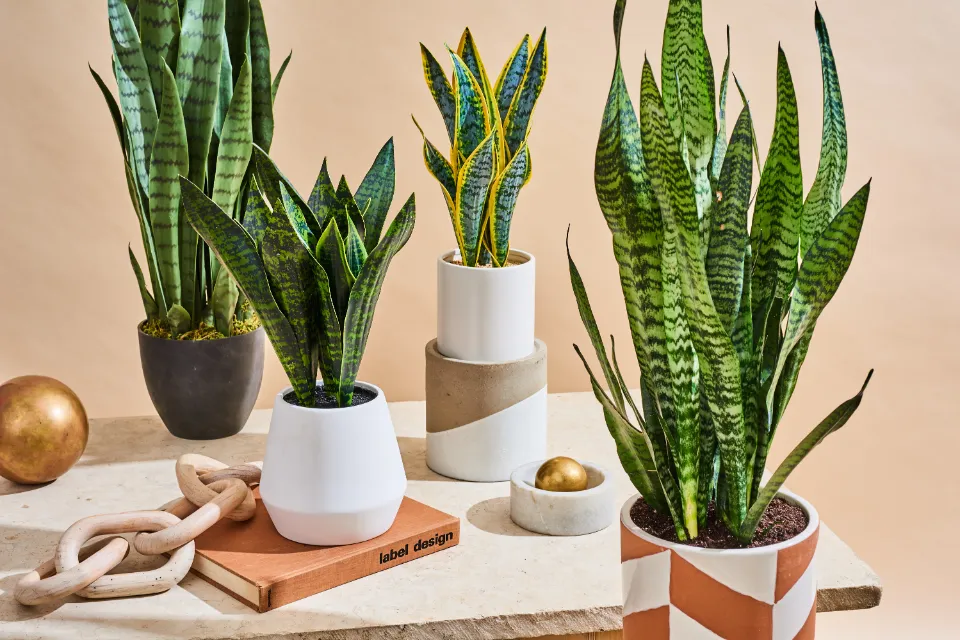
Brown leaf tips in snake plants
This is the second most typical overwatering occurrence in a snake plant. The leaf’s increased water damage may cause the tips to begin withering off first. Long snake plant leaves are about to begin dropping their tips.
Browning of the tips takes time. The tips of the leaves are the first to receive less water, if any, due to the harm caused by overwatering. Additionally, it will result in the browning of the leaf’s tip and its loss of growth potential, causing it to droop and wither away. You can tell if the plant has been overwatered by checking the moisture level of the soil.
Root rots in snake plants
Root rot usually occurs due to the bacterial and fungi outbreak in the snake plant. Overwatering is one of the most frequent and important causes of it in plants. Due to excess water present in the soil leaving it damp, it attracts bacteria and fungi towards it that damage the roots in the plant causing the snake plant to wither away slowly.
The roots of a snake plant are white and crusty. If you notice some of the roots turning brown, your plant may be suffering from root rot. You can also determine the presence of root rot in a plant by seeing any signs of discoloration in the foliage or the leaves of the snake plant. Additionally, you can detect root rot in a plant by smelling the soil it is growing in. The presence of fungi that thrive in moist environments in the plant is indicated by a smelly soil sample.
Cutting out the damaged roots, thoroughly washing the plant with water, and transplanting it to a new potting medium are all recommended steps to take in order to prevent snake plant root rotting caused by overwatering. Repotting will greatly help the plant by indicating a better and healthy growth environment around it. Also, controlling the water provided to the plant is essential.
Leaves turning yellow in snake plants
Another indication that snake plants are overwatered is yellowing leaves. The nitrogen may be carried away by the additional water as it percolates through the soil, leaving the plant nitrogen-deficient. Since nitrogen is water soluble, it will easily wash out of the soil.
Further, the nutrient deficiency causes the snake plant to turn its leaves yellow. Another sign that the roots are deteriorating is the inability to take up any remaining nitrogen in the soil. The causes of yellowing leaves are primarily caused by root rot and excessive watering. The decaying causes the fungus-infected roots to lose their ability to draw water and nutrients from the soil for the leaves. A lack of minerals prevents the plant from growing.
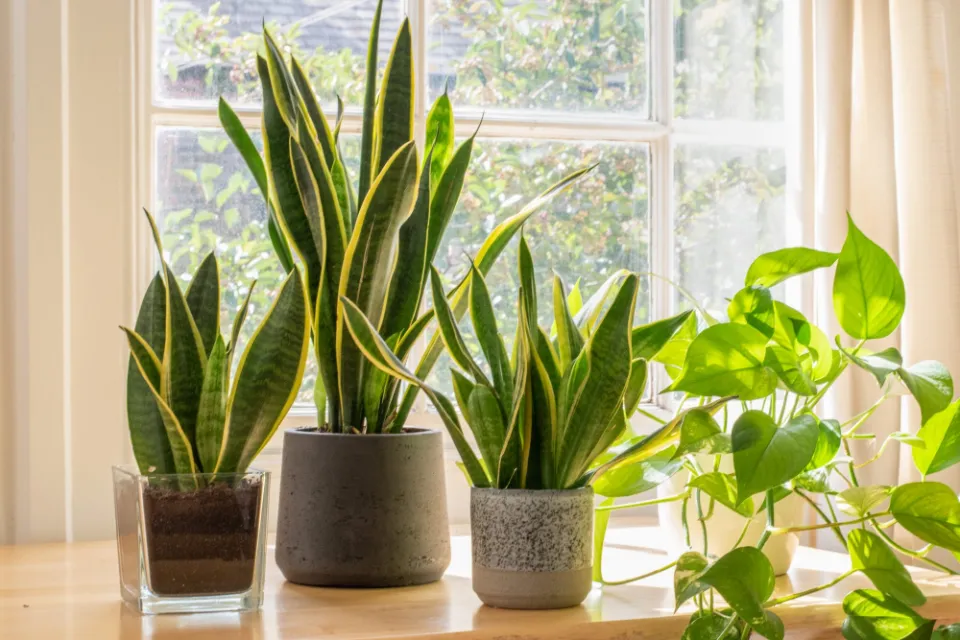
Squishy leaves in snake plants
When leaves of snake plants absorb too much water, the cell structure is severely harmed. Overwatered leaves eventually swell and deteriorate into floppy, mushy, and squishy states. It is also among the most typical symptoms of overwatering in snake plants.
Rigid, green leaves that stand straight up from the plant’s base characterize a healthy snake plant. By controlling the plant’s water intake and taking good care of it, you can prevent the leaves from becoming mushy.
Mold in snake plants
Another sign that a snake plant is being overwatered is wet, spongy soil. Surface mold may start to grow as a result of the soil’s apparent moisture and lingering moisture. Too much water in the soil is typically to blame when white or green mold develops on the surface of soil in pots.
If you see any mold growing on the snake plant, make sure to get rid of it right away because it can be very detrimental to the plant’s growth and development. After that, clean the damaged flowers with a wet paper towel. It is best to carefully remove the damaged parts if mold is still visible on the plant after cleaning because it is probably still active.
Water the plant as the soil dries out and repot it after giving it a fungicide spraying. It’s crucial to maintain a comfortable temperature as soon as possible because mildew can spread more easily when there isn’t enough heat, light, or air.
Can You Recover An Overwatered Snake Plant?
If you treat your snake plant and save it early enough, you can definitely save it from overwatering.
The plant may suffer from severe root rot, a fungus that will kill it, if it is allowed to sit in waterlogged soil for an extended period of time.
Stop watering your plant first, and then move it to a sunny area to help it dry out.
It is also important to remember that excess light can cause additional problems to your plant, so when you do this, opt for low to medium light intensity in your location. Try putting it near a window so the extra water can dry off.
But don’t worry, we’ll go into more detail about how you can quickly save your plant.
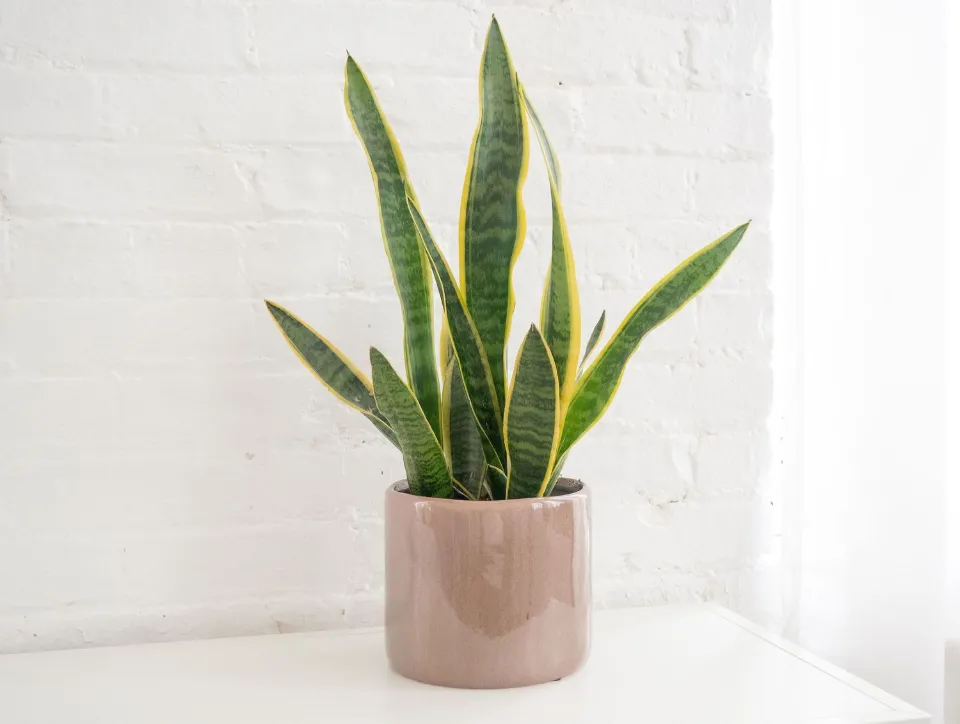
How to Save Snake Plants After Overwatering?
If you catch your snake plant early enough, it might be possible to save it from the effects of too much moisture and overwatering. Take a look at our thorough instructions on how to save your snake plant from overwatering.
What you’ll need
- A new pot with good drainage holes (I’m obsessed with this one)
- Fresh cactus soil or potting mix
- Clippers or scissors
- Time, normally a few days
Move Your Snake Plant to a Sunny Spot
If you’re trying to save your snake plant from overwatering, the first thing you have to do is move your plant to a sunny spot. The removal of water from the soil will benefit from direct sunlight. The plant will consume the water more quickly, and extra water will eventually evaporate.
To save an overwatered snake plant, you have to start with dry soil. If you pull an overwatered plant from wet soil, it’s going to be hard to assess the condition of the root ball directly. For a clear view of the roots, the soil must be completely dry. Let drying happen naturally. To aid in the drying of your plant, never, ever use a drying medium. Your snake plant will suffer more damage than benefit if you use a hair dryer on it.
Remove Your Snake Plant from the Old Soil
Your plant needs to be taken out of its old pot and soil as the next step in saving it. Even though the foliage of a plant that has been overwatered may not show signs of damage, you should still be worried about the condition of the roots and the soil they have been growing in.
When the potting medium becomes too saturated, you have to worry about a few things, the most important being disease. Both bacterial infections and fungal diseases can affect snake plants. You must eliminate any soil that may be home to organisms that will eat away at the roots of your snake plant in order to prevent fungal infection.

Look for Signs of Root Rot
You must examine the roots of your snake plant more closely after completely removing the soil from the root ball. Roots begin to experience oxygen deprivation when they are immersed in excessive amounts of water. They begin to die when this happens. Root rot should be your main concern if you’re taking care of an overwatered snake plant.
You must look for strong roots if you want to save an overwatered snake plant. To stop root rot from spreading, any roots that appear to be affected by it must be cut out. Root rot is relatively simple to detect when the roots are exposed. Rotten roots will be brown, slimy, and have a distinct odor. If necessary, prune the roots of your plant.
Repot Your Snake Plant
It is time to repot your snake plant using your new container and fresh potting soil. Generally, snake plant potting soil should be loose soil, as this promotes adequate draining.
how to repot a snake plant
- After removing the snake plant from its pot gently, brush off any remaining soil.
- Where there is dead tissue, prune the snake plant’s roots, being careful not to remove more than 60% of the roots.
- If there are any hidden rotten roots, remove the soil from the root ball. You can separate the pups at this point and give them their own pot if you’d like
- Cactus soil and the Fox Farm coco coir and perlite mix (linked below) should be used to fill your new pot to a quarter full.
- Then, add your soil mixture to the empty space in the pot, then insert your snake plant.
- Pat the soil down and place the plant in a bright shaded spot. Before watering again, let the soil completely dry out.
When planting, don’t water or apply snake plant fertilizer right away. After repotting, if you must water your plant, do so sparingly and wait to do so until the soil is completely dry.
Know How Much Root Rot is Too Much
Unfortunately, a snake plant that has severely rotted roots won’t thrive in a new container. Overwatering a plant occasionally has a quicker negative effect than you might expect. As such, you may not be able to repot your snake plant to save it from overwatering. But there’s still a chance! An overwatered snake plant may be saved through propagation. Read about How to Propagate Snake Plants
Find your snake plant’s healthiest leaves when root rot becomes too much. Cuttings will be made from these healthy leaves. To get as far away from the roots as you can, you should climb the leaves. This will assist in ensuring that there is no possibility of the rot spreading. Simply trim the snake plant leaves where they appear to be in good health. Then, lay the cuttings in sunlight for a few days, allowing the fresh cuts to “scab” up.
You can plant the leaves once they have scabbed in the sun. Make sure to plant cuttings in fresh potting soil that won’t cause overwatering problems, of course. Their foliage should be positioned above the soil and their base should be buried 1 to 2 inches deep. Place their pot in indirect light and give them a very light watering. Given how tough snake plants are, new growth should appear fairly quickly. A lot of your own plants can be started in this manner as well.
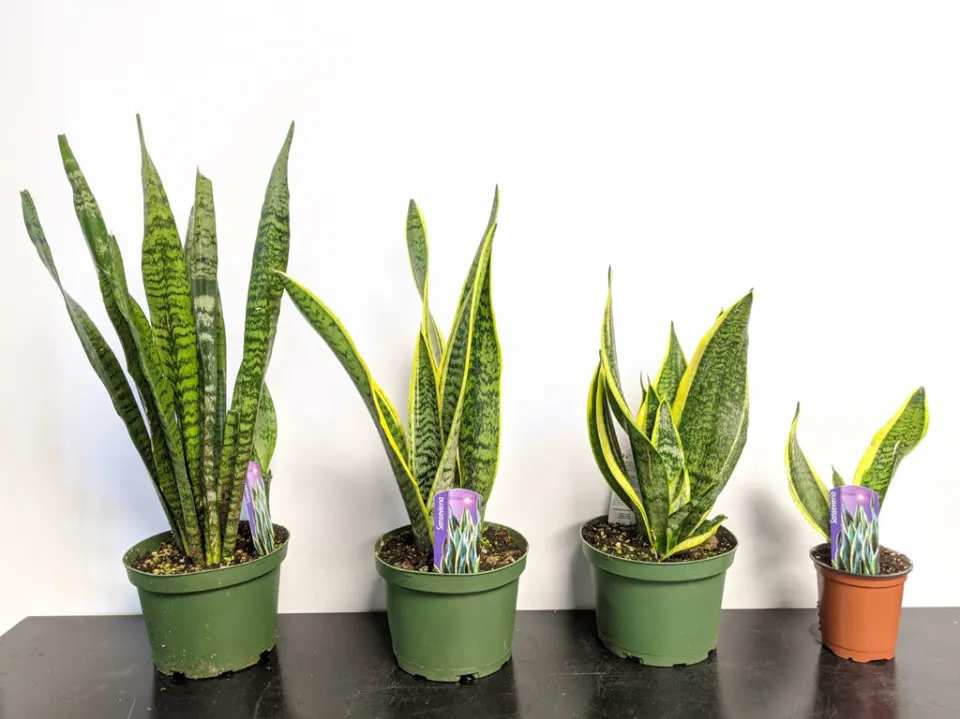
How to Water the Snake Plant?
A developed and well-nourished growth in the plant is ensured by effectively watering snake plants. The process needs to be kept straightforward and simple. Also, remember to always limit the watering of the plant to avoid any overwatering situation that can cause damage to the plant. For optimal growth, snake plants require regular watering at least once a week.
Water must be added to a watering can and applied to the soil until a drip appears from the pot’s drainage hole. If you keep your plant in a pot on a saucer, make sure it doesn’t sit in water by lifting the pot once or twice a day to drain any extra water. Before you water your plants once more, make sure the soil is completely dry. It takes very little water for the snake plant to grow. We have mentioned some suggestions below that you can consider while watering the snake plant!
- Never use tap water to water plants. Where you live may have particularly high levels of fluoride or iron in your tap water, which are not good for snake plants at all. These minerals cause the roots to dry out because they prevent any water from penetrating them. So to avoid this situation do not use tap water for any indoor plants.
- For your snake plants, only use filtered or purified water. The water must be free of any unwanted nutrients that the plant does not need, and it must also be clean. Ensure a stable water surface. As previously mentioned, plants can suffer from either overwatering or underwatering. For controlled watering of the snake plants, a sprayer will work well.
- If you decide to move your snake plant, water it slightly more frequently than usual without drowning it. Although you don’t want to harm your snake plant, you need to give it some time to grow roots in the new pot of soil. Consider how much water you will be feeding the plant when deciding on the size of the plant and the pot. To prevent future damage to the plant, water it.
Top watering tips:
How Can You Treat Severe Root Rot?
If you leave root rot unchecked, it can easily spread across other parts of the plant, such as leaves and stems. It is a known killer and causes a great deal of stress to the plant.
Simply looking at the plant’s general health will reveal whether the root rot has spread to the leaves. They could be harmed by root rot, or there might be an imbalance between the food supply and their nutritional needs as leaves.
This is how to prevent severe root rot in your plant.
- Start by removing your plant from the ground. This is a fairly simple process, especially when the soil is wet. If the rot has reached the leaves, then the potting medium will likely smell foul. You need to get rid of the infected surface of the plant and wash any critical areas affected.
- Trim any damaged leaves or roots after the plant has been cleaned. Just by observing how it develops from the plant’s base, you can determine whether it is infected. Slice suspicious leaves to check for markings inside their structure.
- Put the snake plant in a fresh pot with fresh soil and monitor its recovery. These plants are succulents, which can go for extended periods of time without water. Do not water for a week as you wait for it to recover. How Often Should You Water a Snake Plant?

FAQs
Is My Snake Plant Dying from Too Much Water?
Overwatering your snake plant can cause it to die off even though it’s not the water that kills the plant every time. The excess water encourages fungal and bacterial growth within the potting medium, which spreads to the roots of the plants, reducing its ability to take in water.
The snake plant will eventually die if the problem is ignored for a long period of time and the rot spreads to other parts of the plant.
Is My Snake Plant over Or Underwatered?
Your Snake Plant’s leaves will start to wilt, curl, and droop if it goes for an extended period of time without water. With prolonged or repeated underwatering, you may see them fade to yellow or turn crispy and brown. So that it doesn’t reach this stage, try to check the soil frequently!
How Long Does It Take for Plants to Recover from Overwatering?
The good news is that most plants will bounce back between 7-14 days if they’re given proper care (which includes rehydration). Expect an improvement to take around two weeks to manifest if this isn’t possible due to significant damage or a lack of healthy root systems.
How Much Water Does a Snake Plant Need?
Your Snake Plant only needs to be watered fortnightly, allowing its soil to completely dry out between waterings to prevent overwatering and root rot. Feel free to water your snake plant only once a month during the winter if the soil is still moist after two weeks.
How Do You Know If a Snake Plant is Stressed?
If you’ve recently bought, moved, or repotted your snake plant, wrinkled leaves could also be a sign of stress. Plants are not used to environmental changes and may become shocked if they are moved around too much. It will take some time for the plant to adjust, but eventually it should go back to normal on its own.
Summary: How to Save An Overwatered Snake Plant?
Signs of an overwatered snake plant include drooping, yellowing leaves, and unsteadiness. To prevent the snake plant from expiring, take it out of its container, trim any rotting roots, and repot it in a new container with fresh potting soil. Place the plant where there’s bright indirect light.
If you have any questions, please leave a comment. My Prime Home tries to give you the best home improvement information. Don’t forget to share the post. Thank you for reading.
